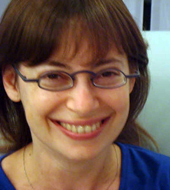Summary
Diagnósticos diferenciais
comuns
- ოჯახური ტანდაბლობა (გენეტიკური ტანდაბლობა)
- ზრდისა და განვითარების საერთო დაყოვნება
- იდიოპათური ტანდაბლობა
- გესტაციურ ასაკთან შედარებით პატარა, ვერ ახერხებს დაწევას 2 წლის ასაკისთვის
Incomuns
- ზრდის ჰორმონის დეფიციტი
- ჰიპოთირეოზი
- კუშინგის სინდრომი
- ზრდის ჰორმონის არასენსიტიურობა (ლარონის სინდრომი)
- კრანიოფარინგიომა
- ტერნერის სინდრომი
- ნუნანის სინდრომი
- რუსელ-სილვერის სინდრომი
- 21-ე ქრომოსომის ტრისომია
- პრადერ-ვილის სინდრომი (PWS)
- დი-ჯორჯის სინდრომი (velocardiofacial სინდრომი)
- გლუტენური დაავადება-ცელიაკია
- ცისტური ფიბროზი (CF)
- ასთმა (საშუალო ან მძიმე ფორმის)
- გულის ქრონიკული დაავადება (თანდაყოლილი ან შეძენილი)
- შაქრიანი დიაბეტი
- თირკმლის ქრონიკული უკმარისობა
- იუვენილური იდიოპათური ართრიტი (JIA)
- კრონის დაავადება
- წყლულოვანი კოლიტი
- ავთვისებიანი მდგომარეობა
- თირკმლის მილაკების აციდოზი
- რაქიტი
- ჩონჩხის დისპლაზია (მა. აქონდროპლაზია, ჰიპოქონდროპლაზია, არასრული ოსტეოგენეზი)
- ხერხემლის სვეტის დაავადებები (ირადიაცია, ოპერაცია, თანდაყოლილი დეფორმაციები)
- ფსიქოსოციალური დეპრივაცია (ძალადობა, უარყოფა, შიმშილი, ინსტიტუტიონალიზაცია)
- ნერვული ანორექსია
- კალიუმის გასტროინტესტინური კარგვა
- ნაყოფის ალკოჰოლური სინდრომი
- ყურადღების დეფიციტის და ჰიპერაქტივობის სინდრომისთვის სტიმულანტი მედიკამენტები
Colaboradores
Autores
Renee Bargman, MS, MD

Pediatric Endocrinology
NYC Health and Hospitals/SUNY Downstate Medical Center
Brooklyn
NY
Declarações
RB declares that she has no competing interests.
Agradecimentos
Dr Renee Bargman would like to gratefully acknowledge Dr Maria Vogiatzi, a previous contributor to this topic.
Revisores
Ian Marshall, MD
Chief of the Division of Pediatric Endocrinology
Assistant Professor
UMDNJ-Robert Wood Johnson Medical School
New Brunswick
NY
Declarações
IM declares that he has no competing interests.
Raphael David, MD
Professor of Pediatrics
Director
Pediatric Endocrinology
New York University Medical Center
New York
NY
Declarações
RD declares that he has no competing interests.
Créditos aos pareceristas
Os tópicos do BMJ Best Practice são constantemente atualizados, seguindo os desenvolvimentos das evidências e das diretrizes. Os pareceristas aqui listados revisaram o conteúdo pelo menos uma vez durante a história do tópico.
Declarações
As afiliações e declarações dos pareceristas referem--se ao momento da revisão.
Referências
Principais artigos
Wit JM, Kamp GA, Oostdijk W, et al. Towards a rational and efficient diagnostic approach in children referred for growth failure to the general paediatrician. Horm Res Paediatr. 2019;91(4):223-40.Texto completo Resumo
Cooke R, Goulet O, Huysentruyt K, et al. Catch-up growth in infants and young children with faltering growth: expert opinion to guide general clinicians. J Pediatr Gastroenterol Nutr. 2023 Jul 1;77(1):7-15.Texto completo Resumo
National Institute for Health and Care Excellence. Faltering growth: recognition and management of faltering growth in children. Sept 2017 [internet publication].Texto completo
Cohen P, Rogol AD, Deal CL, et al. Consensus statement on the diagnosis and treatment of children with idiopathic short stature: a summary of the Growth Hormone Research Society, the Lawson Wilkins Pediatric Endocrine Society, and the European Society for Paediatric Endocrinology Workshop. J Clin Endocrinol Metab. 2008 Nov;93(11):4210-7.Texto completo Resumo
Bryant J, Baxter L, Cave CB, et al. Recombinant growth hormone for idiopathic short stature in children and adolescents. Cochrane Database Syst Rev. 2007 Jul 18;(3):CD004440.Texto completo Resumo
Artigos de referência
Uma lista completa das fontes referenciadas neste tópico está disponível para os usuários com acesso total ao BMJ Best Practice.

Diretrizes
- Diagnosis, genetics, and therapy of short stature in children: a Growth Hormone Research Society international perspective
- Faltering growth: recognition and management of faltering growth in children
Mais DiretrizesConectar-se ou assinar para acessar todo o BMJ Best Practice
O uso deste conteúdo está sujeito ao nosso aviso legal